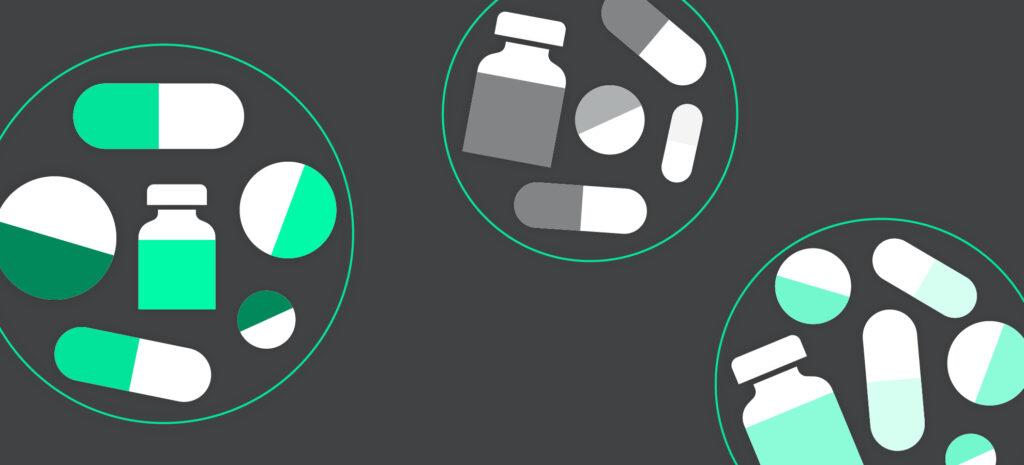In the rush for vaccines and treatments, the COVID-19 pandemic heightened public awareness of clinical trials and research. But the dramatically accelerated approvals and manufacture of vaccines bore little resemblance to the typical journey non-emergency clinical research must take before a drug or device is approved for public use. The pandemic also drastically affected the progress of product development. Thousands – around 80% – of non-COVID trials were stopped or interrupted. The disruption forced life science companies and their clinical R&D teams to make major adjustments to the process. But in a typical setting, how does clinical research work?
As it is, it takes medicines at least ten years from basic medical research to approval, including six to seven years of clinical trials. The role of research and development in the pharmaceutical industry is a critical and complex part of bringing drugs to market, and effective engagement and insight management among all stakeholders — who may be scattered throughout the country and the world — is crucial to meaningful results.
Here’s a brief overview of the pharma R&D process to tee up the normal challenges teams face; then, we’ll see how, with improved technology, teams are adjusting to a reconfigured world.
- How does clinical research work?
- What are the types of clinical trials?
- What are the phases of clinical trials?
- How do clinical teams use insights management?
How does clinical research work?
Clinical research is simply the study of human volunteers or clinical trial participants that help doctors and researchers learn about new solutions to health problems. Data from clinical trials are then examined using pharma R&D analytics to determine whether certain therapies will continue to progress through the drug development progress.
The primary types of clinical research are observational and clinical trials.
Observational trials
One type of clinical research is observational trials, where researchers gather data from people in normal settings. No specific new drug or medical device, procedural or behavioral intervention is done with these clinical trial participants, as is done in clinical trials. For example, a clinical researcher may observe a group of older volunteers over a period of time to measure the effects of aging or lifestyle on cognitive or cardiac health.
Clinical trials
A clinical trial is a research study of people to test the safety and effectiveness of a specific medical, surgical, or behavioral intervention. A lead investigator heads every study, usually a medical doctor, with a research team of doctors, nurses, and other HCPs. They may study new drugs or medical devices (say, an improved pacemaker), different surgical techniques, better use of existing treatments, or behavioral changes (such as a change in diet or sleep patterns) that can improve health.
Before a clinical trial for humans is approved by the Food and Drug Administration (FDA), preclinical research must be performed in labs to answer basic questions about a new therapy’s safety. Then a clinical trial is run according to the medical research plan or protocol created by the researchers or manufacturer. The protocol addresses:
- Why the study is being conducted
- Who may participate in the study
- Number of participants needed
- How long the study should last
- Schedule of tests, procedures, drugs, and their dosages
- What assessments will be done, and when
- What data will be collected, and how it will be analyzed
What are the types of clinical trials?
The primary, but not only, types of clinical trials include:
- Screening trials test new potential advancements in detecting health conditions and diseases.
- Diagnostic trials look for more effective methods to identify certain illnesses or conditions, like tests and procedures.
- Treatment trials test interventions such as treatments, new drug combinations, medical devices, and different approaches to surgeries and other therapies.
What are the phases of clinical trials?
Clinical trials are often done in a series of four steps called phases. Each phase has a different purpose.
- Phase I trials test the experimental treatment on a small group – generally 20 to 80 healthy volunteers, but if these are cancer clinical trials, people with that type of cancer participate – for its safety and side effects and to determine its proper dosage and use of the cancer treatment. This phase can last several months. Around 70% of drugs move on to phase II.
- Phase II trials use 100 to 300 people with the disease or condition the experimental drug is developed to treat. The phase II trial emphasizes the medication’s effectiveness as the research team continues to study the safety and side effects. This phase can last several months to two years. Around 33% of drugs or devices move to phase III.
- Phase III trials are also known as pivotal studies. Done with a large group (from about 300 to 3,000 people), a new treatment’s safety and effectiveness are tested further with different populations and different dosages monitored. This phase can last one to four years. If the FDA agrees the product is safe and effective after the phase III trials, it approves it for public use. Around 25-30% of drugs move on to the next phase.
- Phase IV trials are done once the drug has been given FDA approval, using several thousand volunteers from diverse populations who have the condition or disease.
How do clinical teams use insights management?
With the coronavirus and its profound challenges, life science companies’ clinical teams — hamstrung by the pandemic’s restrictions on personal interaction and travel — were forced to shift to all virtual, all the time. Some could pivot quickly; others had to feel their way more slowly. Still, patient availability and all the communication related to clinical trials – and the associated data – began to suffer. This challenge led to new pharma R&D trends that will carry into the future.
Clinical teams quickly discovered that they needed more than video conferencing platforms and instant messaging to ensure safe and successful studies. Instead, they began enabling asynchronous engagement with HCPs, investigators, patients, and other trial stakeholders at every drug and device development phase. (Read an example within the clinical trial setting to learn more.)
Clinical teams began to adapt to – and then champion – virtual engagement using the Within3 platform. They learned to rethink meeting structure, evolving from large-format live meetings to asynchronous sessions with on-demand webcast elements. These changes allowed work to continue and accommodated the human element. Front-line clinicians juggling work and family demands from home weren’t forced to carve out yet another hour of time multitasking while on camera.
By doing more virtual work and sitting through fewer virtual meetings, clinical teams began to see that virtual engagement wasn’t just a crisis-induced stopgap. They saw that transitioning trial activities to virtual settings resulted in more time in the clinic or at home, no travel, and increased comfort with virtual tools. Scheduling challenges and logistics necessary for in-person meetings were eased or eliminated. Teams happily noted time and cost efficiencies gained through asynchronous engagement punctuated by live webcasts.
So hybrid virtual engagements provide more actionable insights, with improved participation, in asynchronous sessions that make it convenient for all stakeholders to attend in their own time. Better methods to interact with patients and their advocates provide valuable insights without traveling. And the research goes on. Download our e-book to learn more about how clinical teams use an insights management platform to improve their work.







